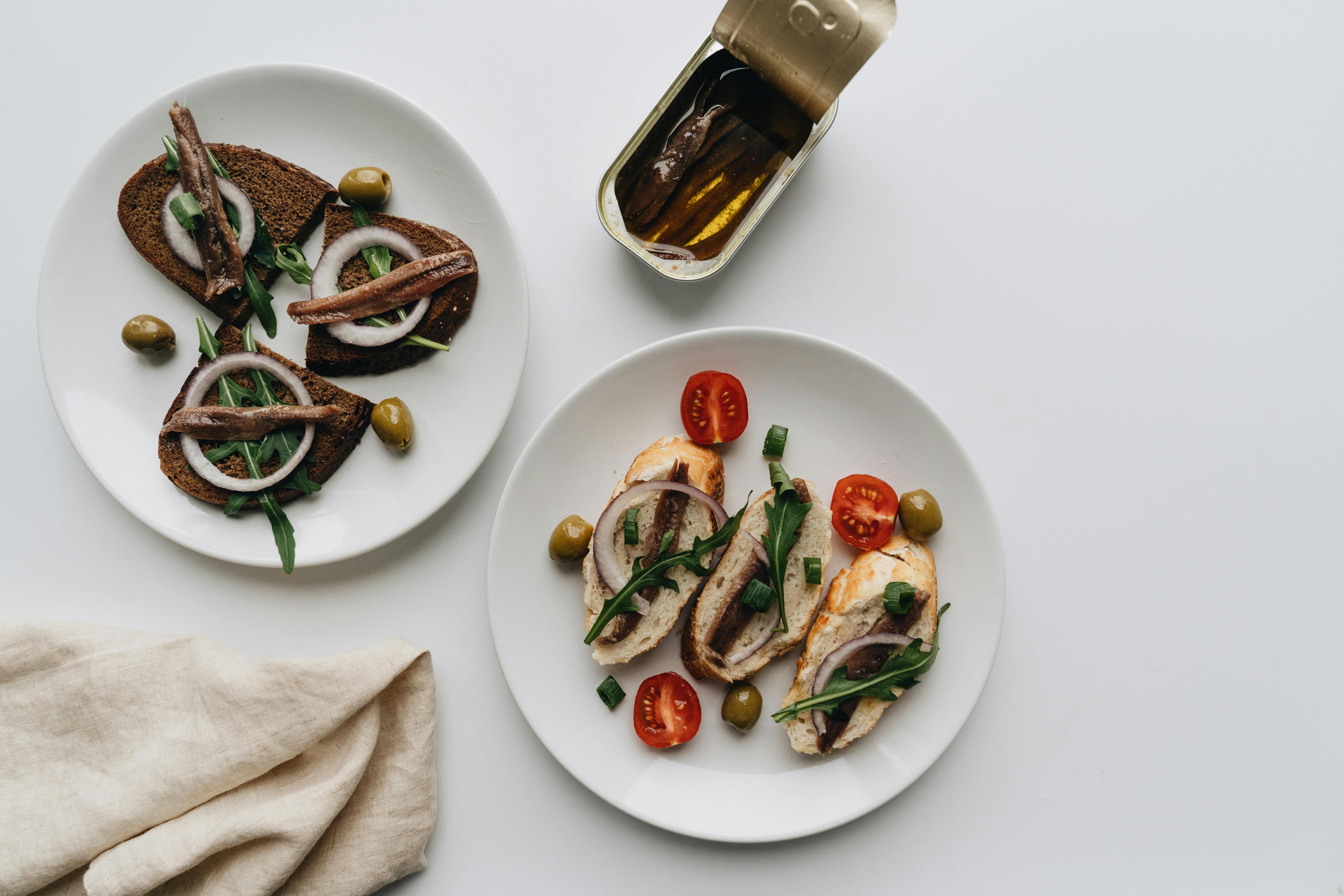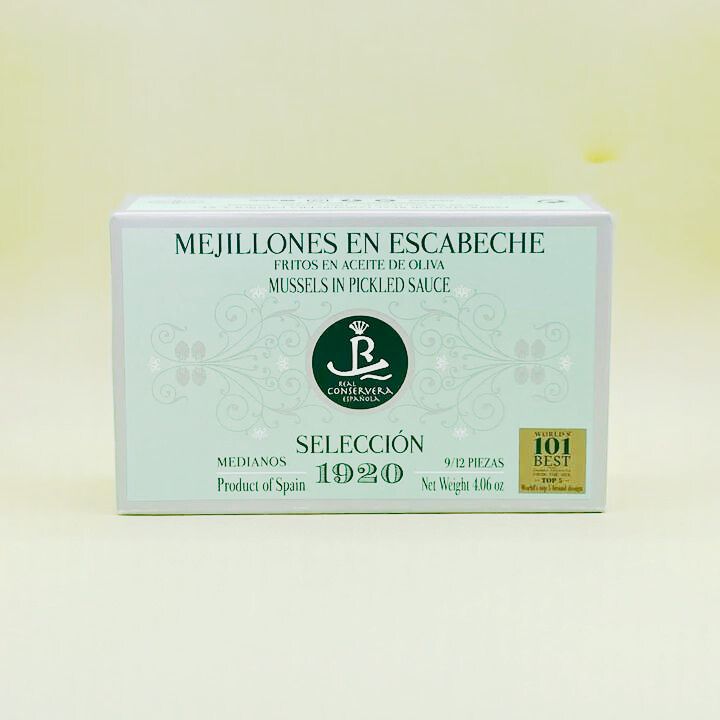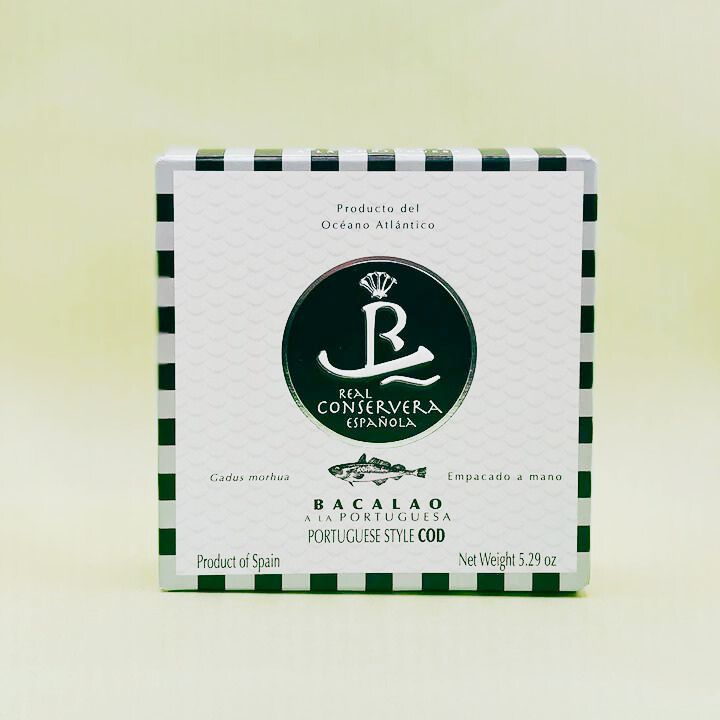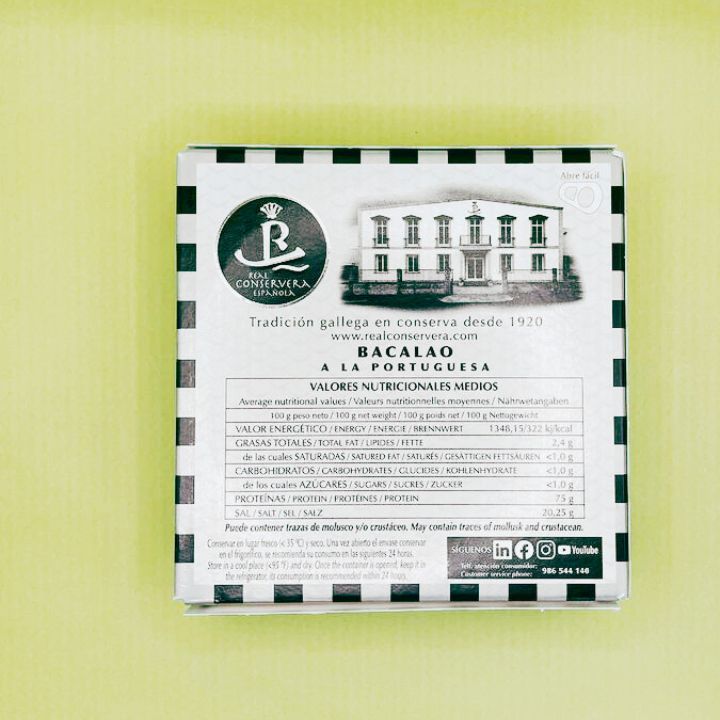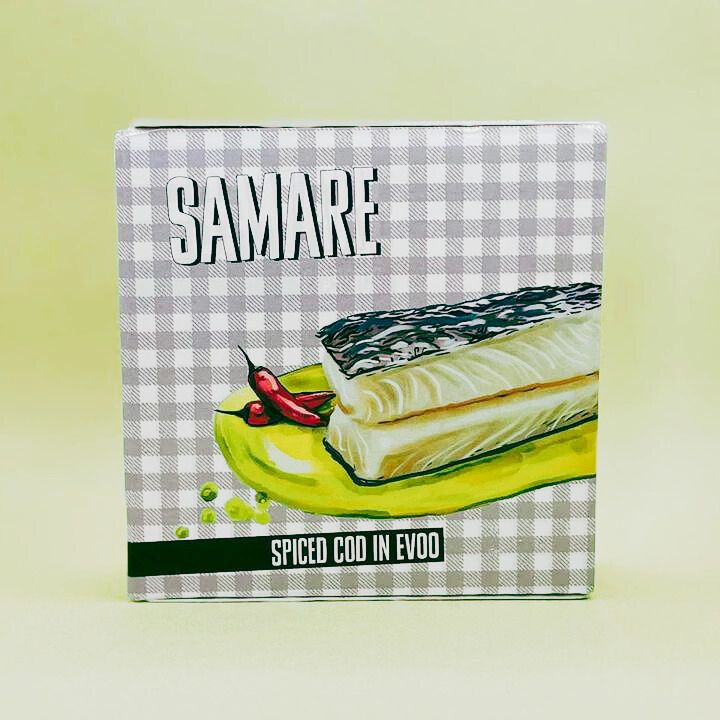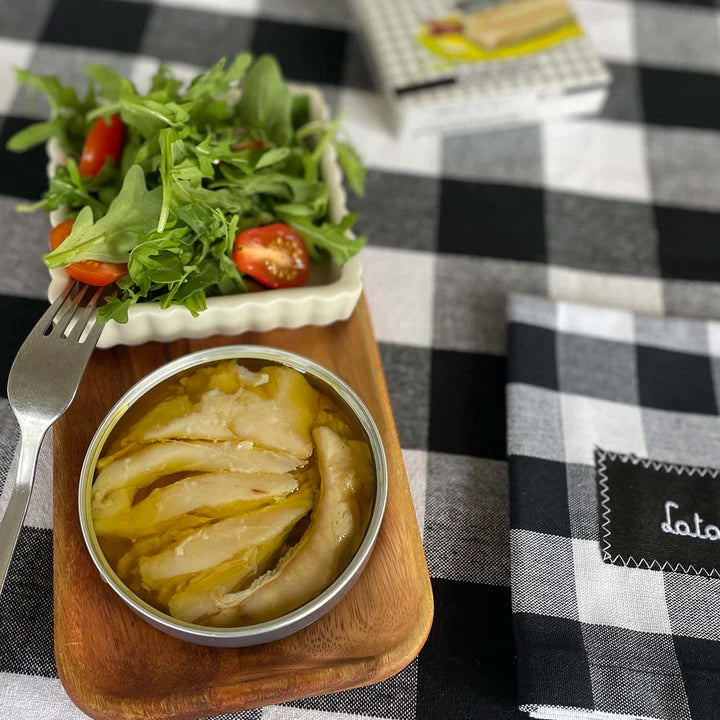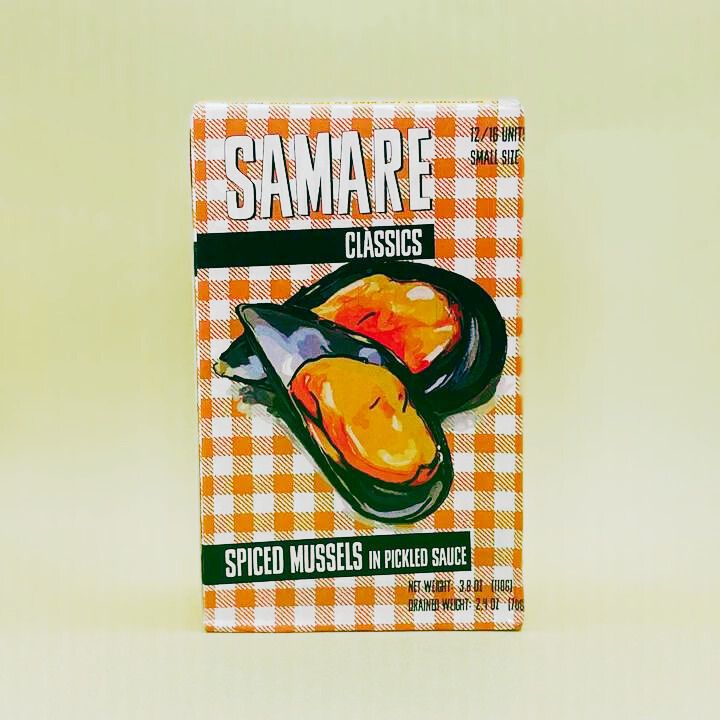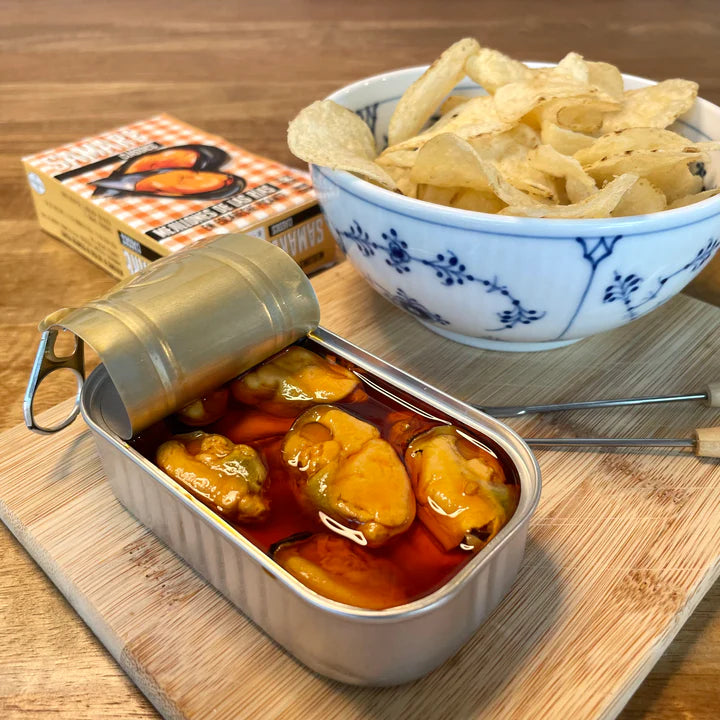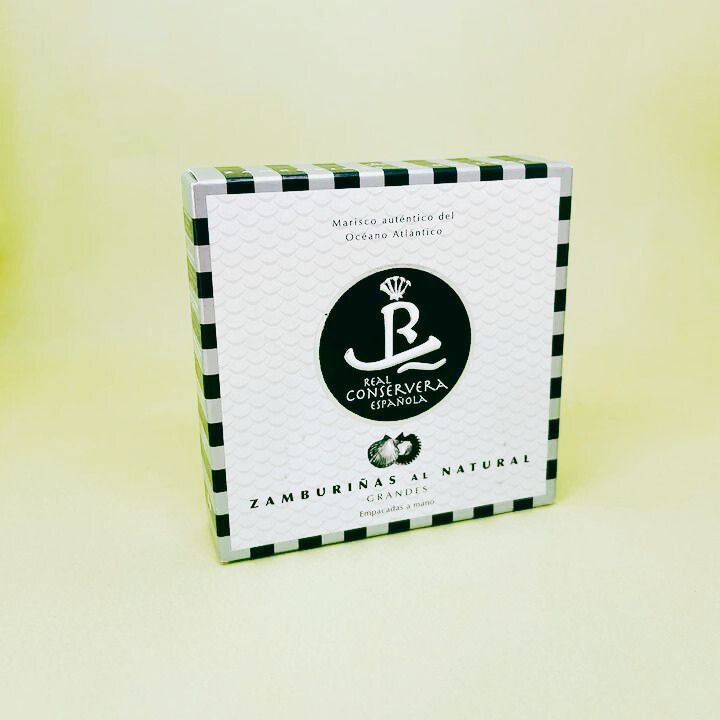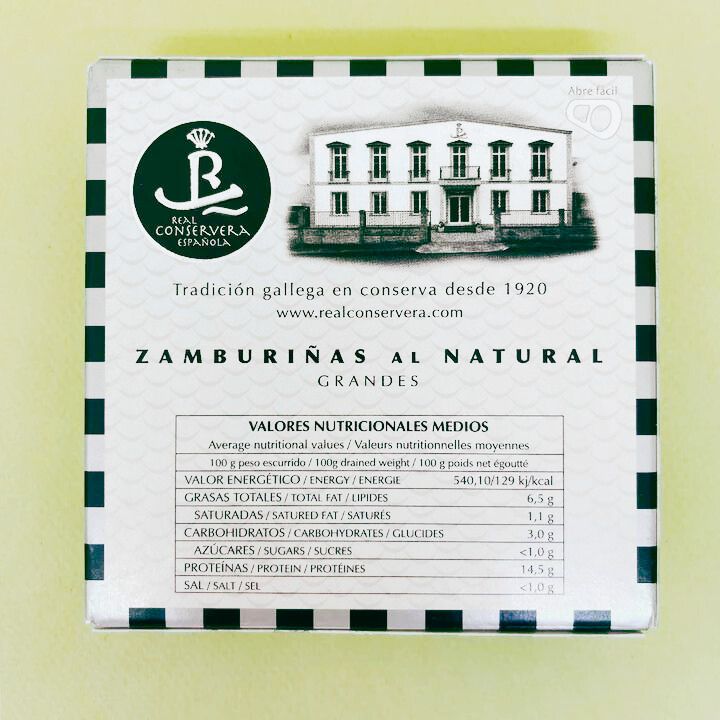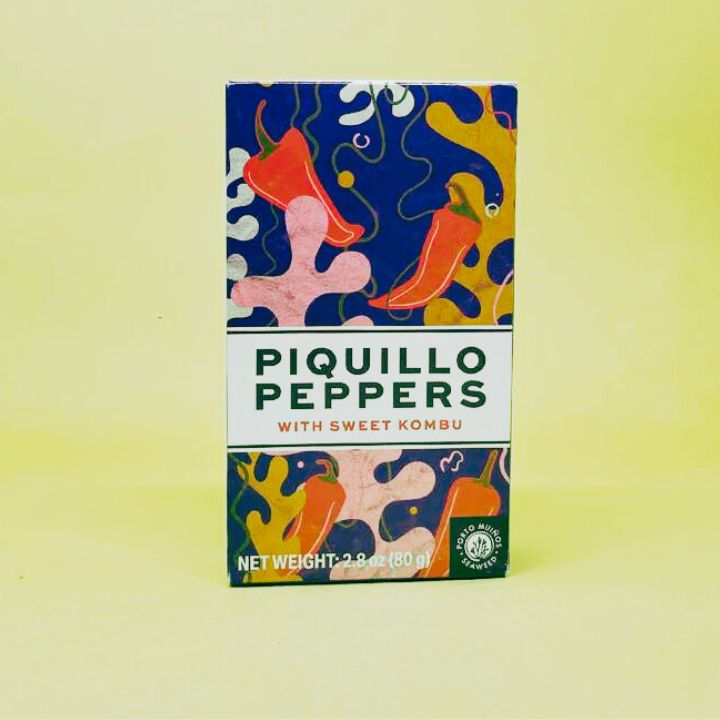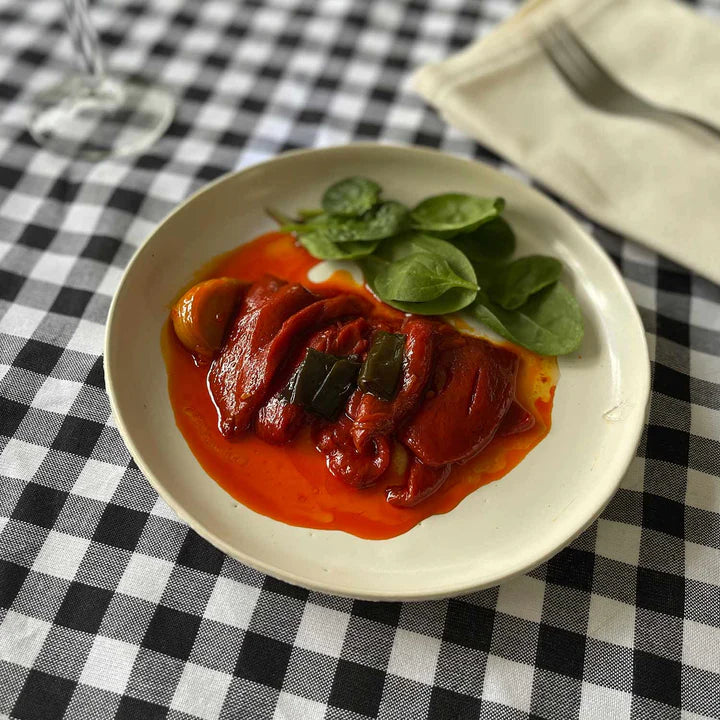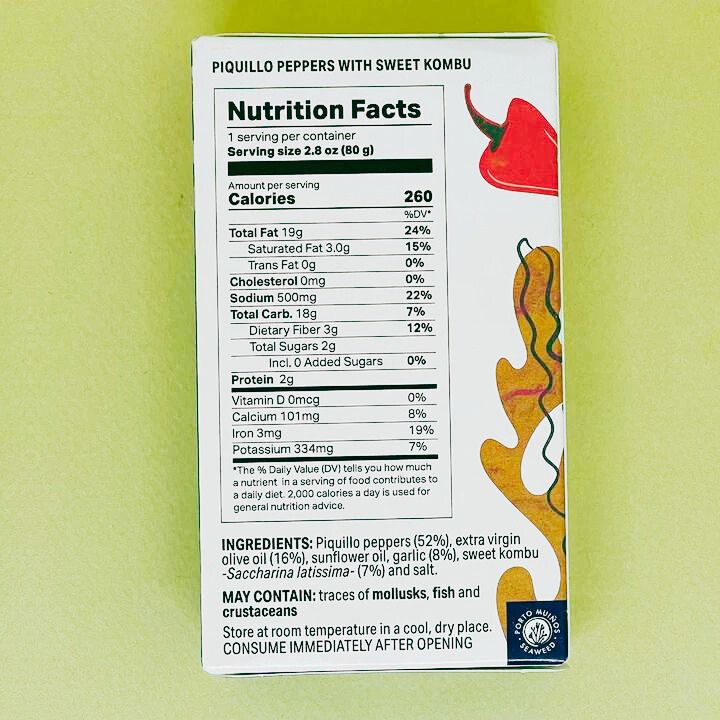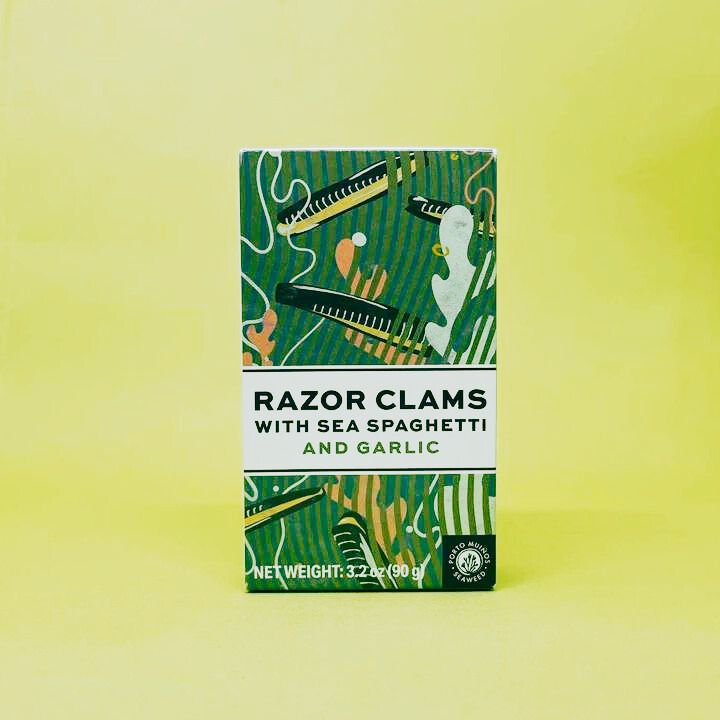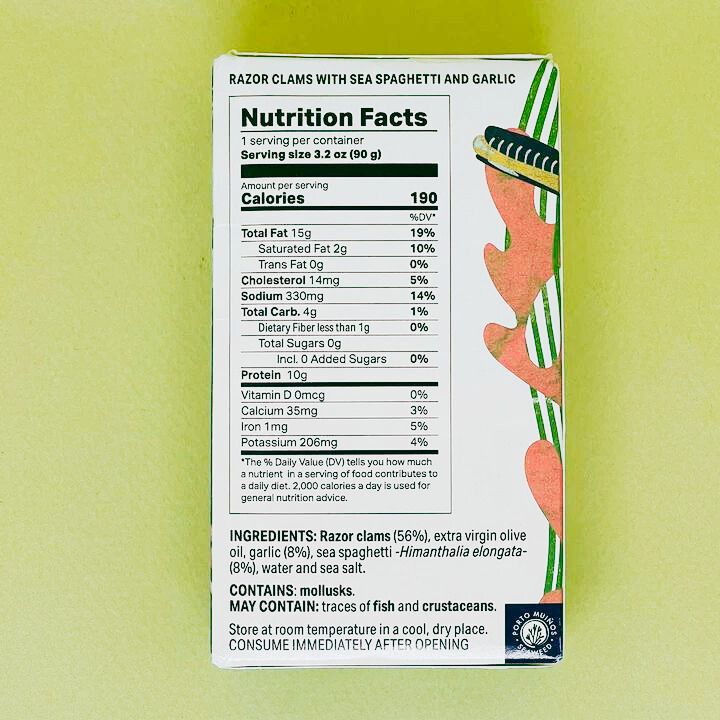The Conservas Revolution
How Canned Seafood Became America's Newest Culinary Obsession.
On a bustling Friday evening at Saltie Girl in Boston's Back Bay neighborhood, diners perch at the marble bar, sipping Spanish vermouths while the server presents them with something unexpected: immaculately arranged tins of seafood nestled on custom wooden boards, accompanied by crusty bread, butter, and pickled accoutrements. The colorful, vintage-inspired tins—containing everything from olive oil-bathed mussels to paprika-spiced octopus—aren't appetizers to be hurried through before the "real meal" arrives. They are the main event.
"Five years ago, I'd have to explain what conservas were to almost every table," says Kathy Sidell, Saltie Girl's owner. "Now people come specifically for our tinned fish collection. We display them like fine wines, and customers often photograph the tins before even opening them."
This scene, once unimaginable in a country where canned seafood largely meant water-packed tuna and salmon relegated to sandwich fillings, now plays out in trendy establishments across America. From dedicated tinned fish bars to chef-driven restaurants to specialty shops, conservas—the premium preserved seafood tradition with deep roots in the Iberian Peninsula—have completed an improbable journey from European working-class staple to American gastronomic phenomenon.
The rapid transformation of these humble canned goods into coveted culinary treasures reflects broader shifts in American food culture: growing appreciation for international traditions, evolution of casual-yet-sophisticated dining, emphasis on sustainable seafood, and the power of visual appeal in the social media age. Perhaps most significantly, conservas represent a reconsideration of what "fresh" and "luxury" mean in contemporary food culture.
From Necessity to Delicacy: The Rich History of Conservas
To understand conservas' unexpected American conquest requires tracing their origins as practical preservation methods that evolved into cultural treasures.
"Food preservation through canning was fundamentally an innovation born of necessity," explains culinary historian Dr. María Paz Moreno, author of "Preserving Spain's Culinary Heritage." "When Frenchman Nicolas Appert developed the canning process in the early 19th century, it revolutionized how coastal communities could utilize their marine resources."
The technique spread rapidly throughout Europe, but it was in Spain and Portugal where conservas transcended mere preservation to become cultural institutions. By the late 19th century, the Atlantic and Mediterranean coastlines of the Iberian Peninsula were dotted with small canneries, many still family-operated today.
"What distinguished the Iberian approach was treating canned seafood not as a lesser substitute for fresh, but as a distinct culinary category with its own merits," notes Moreno. "Where Americans developed canning as primarily utilitarian—maximum nutrition at minimum cost—the Spanish and Portuguese traditions emphasized quality and regional specificity."
In coastal towns like O Grove in Galicia, Spain, or Matosinhos in northern Portugal, canneries became central to local economies and cultural identity. Each region developed signature products reflecting local catch and culinary preferences: Galicia became known for its mussels and octopus; the Cantabrian coast for anchovies; Portugal's Algarve for sardines and tuna.
"The best conservas producers follow practices dating back generations," explains Pedro Martínez, third-generation owner of Conservas Ramón Peña in Galicia. "We still work with the lunar calendar to determine the best harvesting times. The fish are hand-selected, hand-cleaned, and hand-packed. Some families have worked as fileteadoras [women who fillet fish by hand] for three generations."
This commitment to quality transformed what began as practical preservation into an expression of regional pride and craftsmanship. By the mid-20th century, conservas had achieved a paradoxical status in their home countries: everyday foods that were simultaneously respected as culinary treasures.
"In Spain, having guests over and serving premium conservas isn't considered casual or low-effort—it's a sign of respect and knowledge," says José Andrés, the Spanish-American chef who has championed conservas through his restaurants and food products. "You're saying, 'I know exactly which producer makes the best mussels, which sardines are worth sharing.'"
This cultural context helps explain why conservas evolved so differently in Spain and Portugal compared to the United States. While Americans embraced industrial canning primarily for convenience and cost-efficiency, Iberian producers maintained artisanal approaches that prioritized flavor development, texture preservation, and distinctive regional characteristics.
Inside the Tin: The Science and Craft of Premium Conservas
What separates a premium conserva from ordinary canned seafood lies in both the raw materials and processing methods—distinctions that explain why some tins command $30 or more while others sell for $2.
"The transformation begins with selection," explains marine biologist Dr. Elena Rodríguez, who studies seafood quality at Spain's Institute of Marine Research. "Premium conservas use seafood harvested at optimal moments in the life cycle—when fat content, texture, and flavor compounds are at their peak. For sardines, this might be during spring spawning season; for tuna, autumn is ideal."
Timing matters not just seasonally but hourly. The finest producers process seafood within hours of harvest, sometimes operating canneries directly on harbor docks. This immediacy preserves the pristine quality of the raw material before any deterioration begins.
The cooking process varies dramatically by producer and product type. Sardines might be lightly grilled before canning to develop complex flavors. Mussels are typically steamed just long enough to open their shells. Pulpo (octopus) is often slowly poached to perfect tenderness before preservation.
"What truly distinguishes artisanal conservas is the human element," notes Bryan Jarr, co-owner of JarrBar in Seattle, one of America's first conservas-focused establishments. "Premium producers still employ hand-cleaning, hand-cutting, and hand-packing. This allows for careful inspection and gentle handling that machines cannot replicate."
Perhaps most crucial is the maturation process. Unlike most American canned seafood, designed for immediate consumption, many Spanish and Portuguese conservas improve with age—sometimes dramatically.
"Some products, particularly oily fish like mackerel or bonito, undergo remarkable transformations during their time in the tin," explains Jarr. "The flavors meld, textures harmonize, and the interaction between the seafood and its olive oil or sauce creates something entirely new. Three-year-aged sardines taste profoundly different from fresh ones—deeper, more complex, almost umami-rich."
This aging process means that vintage-dated conservas exist, with collectors seeking specific years from renowned producers like Conservas Güeyu Mar or La Brújula, much as wine enthusiasts pursue prized vintages.
The preservation liquid—whether olive oil, tomato sauce, escabeche (vinegar-based sauce), or seawater—further distinguishes premium conservas. "The finest producers use exceptional quality olive oils, often regional varieties that complement the specific seafood," notes food scientist Dr. Carmen Vázquez. "This creates a symbiotic relationship where the seafood flavors the oil, and the oil preserves and enhances the seafood."
This attention to detail produces conservas that defy conventional expectations of canned foods. A tin of premium Spanish berberechos (cockles) presents tender, briny morsels that retain their oceanic essence. Ventresca—the prized tuna belly cut—offers buttery texture and rich flavor that rivals fresh sashimi. Portuguese sardines in spiced olive oil deliver a complex interplay of fish, acid, and aromatic herbs impossible to achieve with fresh preparation.
From Obscurity to Obsession: America's Conservas Renaissance
While conservas have been staples in Spanish and Portuguese households for generations, their journey to American culinary prominence reflects a remarkable cultural and market transformation.
"Ten years ago, we couldn't give these away," laughs Taylor Shellfish Farms' retail manager Marcelle Gonzales, gesturing toward a display of smoked oyster tins at their Seattle market. "Now we can't keep them in stock."
America's conservas awakening began in specialized corners of the food world—Spanish restaurants, Mediterranean wine bars, and specialty food shops serving primarily European expatriates. For decades, quality conservas remained niche products available mainly through direct import or at premium prices in specialty stores.
The first wave of broader American interest emerged around 2015, coinciding with the rise of European-style wine bars and tapas establishments in coastal cities. Venues like Ordinaire in Oakland, Maiden Lane in New York, and Barcelona Wine Bar locations introduced American diners to conservas as sophisticated accompaniments to wines by the glass.
"We discovered that conservas solved several operational challenges for wine-focused establishments," explains sommelier and restaurateur Kathryn Taylor. "They offer complex flavors that pair beautifully with wines, require minimal preparation, have long shelf lives, and create an elegant presentation with little kitchen space or staff."
This practical advantage helped conservas gain footholds in the American dining scene, but the product category remained unfamiliar to most consumers outside major urban centers until a series of cultural and market forces converged to catapult tinned fish into the mainstream.
The COVID-19 pandemic marked a turning point. As Americans found themselves cooking at home more frequently, many sought shelf-stable alternatives to fresh seafood. Premium conservas offered the perfect solution—restaurant-quality seafood available without weekly grocery trips.
"Our online sales increased 400% during the first six months of the pandemic," notes Emily Miura, co-founder of Fishwife, a California-based tinned fish brand launched in 2020. "People were looking to upgrade their pantry staples, and many discovered that high-quality tinned fish offered exceptional value compared to fresh seafood."
Simultaneously, social media—particularly Instagram and TikTok—created platforms where conservas' visual appeal could shine. The vintage-inspired packaging of traditional producers like José Gourmet (with its artist-commissioned labels) and Conservas Ortiz (with its iconic blue tins) proved irresistibly photogenic.
"The 'tin-fluencer' phenomenon exploded during this period," explains food trend analyst Sophia Rodriguez. "Content creators like @tincanfish and @sardineocean attracted hundreds of thousands of followers by showcasing their conservas collections and tasting experiences. The category had a perfect storm of attributes for social media: visual distinctiveness, cultural cachet, accessibility for home audiences, and an element of discovery."
This online enthusiasm translated to real-world demand. Between 2020 and 2024, US imports of premium canned seafood from Spain and Portugal increased by approximately 270%, according to industry data. Specialty retailers report that conservas now constitute a significant growth category, with dedicated sections expanding in gourmet shops across the country.
"We've gone from carrying maybe five conservas products five years ago to over 100 different items today," says Ken Koda, buyer for New York's iconic Zabar's market. "And the customer base has completely transformed—where it used to be primarily European expatriates seeking familiar products, now it's young professionals, food enthusiasts, and even parents looking for convenient but high-quality protein options."
Beyond the Trend: Conservas' Cultural Resonance
Conservas' American embrace extends beyond mere food fashion. Their rapid integration into American dining habits reflects deeper cultural currents and changing relationships with food.
"What we're witnessing isn't simply a product category gaining popularity, but rather a philosophical shift in how Americans conceptualize quality, freshness, and value," suggests food anthropologist Dr. Jennifer Santos. "Conservas challenge the American assumption that 'fresh is always best'—they demonstrate that careful preservation can create something distinct and sometimes superior to its fresh counterpart."
This reconceptualization arrives at a moment when Americans increasingly question industrial food systems and seek connections to traditional production methods. The artisanal nature of premium conservas—with their emphasis on seasonality, regional specificity, and multigenerational craftsmanship—resonates with consumers seeking authenticity and transparency in their food choices.
The environmental advantages of conservas also contribute to their cultural relevance. As concerns about seafood sustainability grow, shelf-stable products that reduce waste and utilize species lower on the food chain (like sardines and mackerel) align with eco-conscious consumption.
"There's a compelling environmental case for shifting some seafood consumption toward conservas," explains marine conservation biologist Dr. Marcus Chen. "The extended shelf life virtually eliminates waste. Many conservas utilize abundant, fast-reproducing species that put less pressure on marine ecosystems than larger predator fish. The packaging is typically recyclable metal rather than plastic. These attributes make conservas increasingly attractive to environmentally-minded consumers."
The social dimensions of conservas consumption have also contributed to their American success. In Spain and Portugal, sharing conservas typically involves communal rituals—opening tins together, passing bread for dipping in flavored oils, discussing the merits of different producers. This social aspect has translated well to American contexts seeking meaningful food experiences.
"Conservas create a different kind of dining interaction," observes Renee Erickson, James Beard Award-winning chef and owner of Seattle's The Walrus and the Carpenter, which features an extensive conservas menu. "They slow people down, encourage sharing and conversation. There's something almost ceremonial about opening a beautiful tin together."
Even the economic positioning of conservas has evolved in ways that resonate with contemporary American consumers. Once considered primarily working-class fare in their countries of origin, conservas have been repositioned in America as accessible luxury—special enough for celebration but affordable compared to fresh seafood equivalents.
"A tin of exceptional hand-packed razor clams might cost $25, which seems expensive for 'canned food' until you consider that the same product fresh might cost twice that amount and require significant preparation skill," notes food writer Max Falkowitz. "Conservas democratize access to seafood experiences that might otherwise be available only in high-end restaurants or coastal locations."
America's Conservas Evolution: From Import to Influence
As conservas establish themselves in American culinary culture, the category itself is evolving beyond its European origins. A new generation of American producers and entrepreneurs is reimagining tinned seafood through local sensibilities and ingredients.
"We're seeing the beginning of distinctive American conservas traditions," observes food historian Sarah Peterson. "Rather than simply importing European products, American producers are applying conservas techniques to local seafood traditions and flavor profiles."
Fishwife, founded in 2020 by Becca Millstein and Caroline Goldfarb, exemplifies this new wave. The company sources seafood primarily from American and Canadian waters, incorporating flavors like maple and harissa that wouldn't be found in traditional European offerings.
"Our approach honors the traditions that inspired us while creating something that speaks to American palates and values," explains Millstein. "We work with small-scale American fishing operations and smoke houses, applying conservas philosophy to species like albacore from the Pacific Northwest or Atlantic smoked salmon."
Scout Canning in Canada follows similar principles, creating conservas featuring Canadian seafood like Prince Edward Island mussels and Ontario trout. Patagonia Provisions, the food offshoot of the outdoor clothing company, has developed tinned mackerel and anchovies adhering to rigorous sustainability standards.
Traditional European producers have noticed this market evolution. Many now create products specifically for American preferences, including larger portion sizes and bolder flavor profiles.
"We've developed certain products with American consumers in mind," acknowledges Antonio Alonso, export director for Conservas Ramón Peña. "Americans often prefer more intensely flavored preservation liquids and larger piece sizes than our traditional European customers."
Retailers have evolved alongside these product developments. Specialized conservas shops like Maiden Lane Market in New York, Preserved State in Portland, and Petit Provisions in Chicago offer carefully curated selections with educational components.
"Education is essential to our approach," explains Amanda Brine, founder of Philadelphia's The Tinned Fish Market. "Many customers are still new to the category, so we offer guided tastings, producer stories, and pairing suggestions. Once people understand the craftsmanship behind these products, the price point makes sense."

The Future in the Tin: Where Conservas Go From Here
As conservas cement their place in American food culture, industry observers debate whether they represent a passing trend or a fundamental shift in how Americans approach seafood consumption.
"What we're seeing with conservas isn't just a fashion cycle—it's a genuine recalibration of values around convenience, quality, and cultural openness," argues food futurist Michael Henderson. "The question isn't whether conservas will remain popular, but how their influence will reshape broader American food habits."
Early evidence suggests conservas' influence extending beyond their specific category. Restaurant chefs increasingly apply preservation techniques inspired by conservas traditions to fresh preparations. Home cooks incorporate conservas as ingredient shortcuts in pasta dishes, salads, and sandwiches. The distinctive aesthetic of conservas packaging has influenced design trends across food categories.
Industry analysts project continued growth, with the US market for premium conservas expected to reach approximately $300 million by 2026, representing about 15% of the specialty canned seafood category. As distribution expands beyond specialty shops to higher-end grocery chains like Whole Foods and Erewhon, more Americans encounter these products in everyday shopping contexts.
However, challenges remain for the category's mainstream integration. American consumers still navigate significant price differentials between conventional canned seafood and premium conservas. Cultural barriers persist around perceptions of canned products as inherently inferior to fresh alternatives. And the knowledge required to distinguish quality producers creates potential barriers to entry.
"The next phase of conservas' American journey depends on the industry's ability to educate consumers while maintaining the quality standards that distinguished the category in the first place," notes food marketing consultant Jennifer Lee. "The risk, as with any rapidly growing specialty food category, is that mass-market versions might dilute the qualities that made conservas special."
The most thoughtful players in the space are addressing these challenges through transparency, education, and community-building. Tinned fish clubs offer subscription services that introduce consumers to varied producers and styles. Restaurants host conservas pairing events highlighting the diversity within the category. Social media communities share preparation ideas and producer recommendations.
For Lisa Goldfinger, a 38-year-old marketing executive in Chicago, conservas represent more than just an interesting food trend—they've changed how she entertains and thinks about seafood.
"I used to feel intimidated about serving seafood at home," she explains, arranging a selection of colorful tins on a wooden board for guests. "Now I keep a 'conservas drawer' with different options for impromptu gatherings. It's opened up a whole world of flavors, and there's something so satisfying about the ritual of opening these beautiful tins together, discovering what's inside."
In this sense, perhaps conservas' greatest contribution to American food culture isn't the specific products themselves, but the values they embody: that preservation can enhance rather than diminish, that convenience needn't sacrifice quality, that humble foods can become treasures when crafted with care, and that traditions from distant shores can find new meaning in American homes.
As the evening progresses at Saltie Girl in Boston, a young couple opens their first tin of conservas—Spanish mussels in escabeche sauce. "I wasn't sure what to expect," the woman admits, carefully placing a mussel on a piece of buttered bread. "But this is amazing—it tastes like the ocean, but better somehow." Her partner nods in agreement, already eyeing the vermilion-colored tin of octopus for their next selection. Another conversion to the quiet revolution happening tin by tin across America.
SIDEBAR: CONSERVAS BY THE NUMBERS
$300 million: Projected US market for premium conservas by 2026
270%: Increase in US imports of Spanish and Portuguese canned seafood since 2020
12-18 months: Typical maturation period for premium conservas before reaching optimal flavor
$4-$40: Price range for premium conservas, depending on seafood type and producer
150+ years: Age of some of Spain's oldest continuously operating conservas producers
48 hours: Maximum time from harvest to processing for the highest quality conservas
8,000+: Number of women employed as hand-packers in the Spanish conservas industry
25%: Annual growth rate in American specialty retailer conservas sales since 2022
GLOSSARY
Conservas: Spanish and Portuguese term for high-quality preserved foods, particularly seafood
Ventresca: Premium tuna belly cut, prized for its rich flavor and buttery texture
Escabeche: Vinegar-based preservation liquid often featuring herbs and spices
Berberechos: Cockles, small bivalves popular in Spanish conservas
Bonito: Related to tuna but smaller, with distinctive flavor
Navajas: Razor clams preserved in their long, narrow shells
Pulpo: Octopus, typically preserved in olive oil with paprika
Fileteadoras: Women who hand-fillet fish in traditional conservas production
Zamburiñas: Small, colorful scallops from Galician waters
Maturation: The aging process that develops flavor in conservas over time

